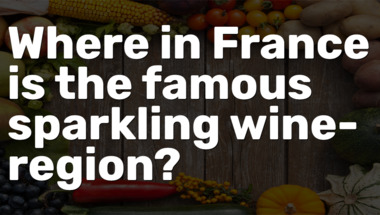

10 questions to test your knowledge

10 questions to conquer

10 mixed questions

Let's see how smart you really are!

10 questions to test your knowledge

10 hard questions

Can you score 5 or higher?

What do you know?

10 movie questions

10 questions

Target : score 3/10

10 mixed up questions

What do you remember?

Tell us your result in the comments

Brain game for the smartest!

10 mixed questions

Can you score 8/10?

10 Trivia Questions

Let's put your knowledge to the test

Can you help us find the missing words?

Can you go above 7 out of 10 correct answers?

Post your score in the comments!

Mixed category quiz

10 mixed questions

How many correct will you get?

You won't get close to 10/10 in this quiz

10 mixed questions for you

10 questions to test your knowledge

10 questions to test your knowledge

10 general knowledge questions

10 mixed questions

* 10 mixed general questions *

Anything above 4 correct = you passed!

10 quite hard questions

Do you remember?

10 Extremely Hard Questions

10 questions to test your knowledge

10 mixed questions

10 mixed questions

10 mixed questions

10 Impossible Questions

Let's test your trivia skills!

Trivia quiz. 10 questions

How many of them will you answer correctly?

How many correct answers will you get?

How many songs do you know?

10 miscellaneous trivia questions

10 mixed up questions

10 questions about geography

10 mixed songs to guess

Mixed category quiz

10/10 will fail this spelling test

Forward quiz if you score 4 or more

10 questions to test your knowledge

These 10 questions will let you know

Trivia quiz for experts

10 mixed questions in one quiz

10 movie questions

10 history questions

10 mixed questions

Do you also love the music of the 1960s?

You are probably going to fail most questions

You must be a historian to nail this quiz

Let us know your score in the comments

Will you even get 5 questions right?

Mixed category quiz

10 questions to test your knowledge

10 questions

A quiz about movies

How high can you score?

Do you know what these girls are doing?

How many will you get correct?

Tell us your result in the comments

10 questions

Mixed category quiz

10 trivia questions for everyone

No one else will nail it!

10 mixed questions

..going to fail 75% of these questions

Let us know your score in the comments

How many correct will you get?

How many songs do you know?

10 songs to guess

10 Hard Questions

How many of them will you answer correctly?

10 questions from us to you!

Are you ready for these questions?

10 questions covering a variety of categories

Don't forget to share your score in the comme..

How many of them will you answer correctly?

10 questions to test your knowledge

10 random questions

Can you name the artists?

Are you a globetrotter?

Tell us your score in the comments :)

How many of them will you answer correctly?

How many of them will you answer correctly?

What do you remember?

How high will your score be?

Can you score 5 or higher?

Are you ready?

10 interesting questions

10 questions trivia quiz

Are you a knowledge genius?

10 questions trivia quiz

10 fun questions

Are you smart enough for this one?

Can you score 3/10?

Do you have it in you?

10 questions to test your knowledge

10 fun questions

10 mixed questions

10 questions

This quiz is for you

Let's see how much you know about food and co..

10 mixed history questions

10 Impossible Questions

10 mixed questions

Did you live in this awesome decade?

10 mixed questions

Exploring Culinary Curiosities: The Stories Behind 10 Unique Trivia Questions
Food and drink are not only essential for sustenance, but they are also deeply woven into the fabric of cultures around the world. Across continents and throughout history, dishes and ingredients have emerged that tell fascinating stories of geography, tradition, and innovation. In this article, we delve into 10 intriguing trivia questions about global cuisine, examining the origins, ingredients, and cultural relevance behind each.
1. What is the main ingredient in a traditional Scottish haggis?
Haggis is perhaps Scotland’s most famous national dish, often associated with the poet Robert Burns, who immortalized it in his work “Address to a Haggis.” The main ingredient in a traditional haggis is sheep’s offal, specifically the heart, liver, and lungs of a sheep. These are minced and mixed with onion, oatmeal, suet, spices, and salt, then encased in the animal’s stomach and simmered for hours.
The resulting dish is rich, earthy, and deeply savory, with a texture that stands out due to the use of oats. Haggis is traditionally served with “neeps and tatties” (turnips and potatoes) and a dram of whisky, particularly on Burns Night every January 25th.
2. Which fruit is used to make traditional British Black Pudding?
This question is a bit of a trick! British Black Pudding is not, in fact, made with fruit as a primary ingredient. Despite the name, the “fruit” in question is actually none. Black pudding is a type of blood sausage, and its main components are pig’s blood, oats or barley, and suet. However, in some very old recipes, apples or even currants were sometimes included to add sweetness and moisture, but this is rare today.
Black pudding is a staple of the traditional English breakfast and is much beloved in the north of England, Scotland, and Ireland. Its deep, iron-rich flavor and crumbly texture make it both unique and divisive among food lovers.
3. Which herb is known as cilantro in the United States?
Here’s where the world of culinary linguistics gets interesting. The herb known as cilantro in the United States is referred to as coriander in most other English-speaking countries. Both names actually refer to the same plant, Coriandrum sativum. In the U.S., “cilantro” refers specifically to the fresh leaves and stems, while “coriander” refers to the dried seeds.
Cilantro/coriander is a crucial ingredient in many global cuisines, from Mexican salsas to Indian chutneys, and even in Mediterranean salads. Interestingly, a significant portion of the population perceives the taste of this herb as soapy, due to genetic factors affecting olfactory receptors.
4. Which country is the origin of the dish Tapas?
Tapas have become synonymous with Spanish cuisine. Originating in Spain, these small, savory dishes are served as snacks, appetizers, or even as an entire meal when several different types are ordered together. The word “tapa” means “cover” in Spanish, and legend has it that slices of bread or meat were once used to cover sherry glasses in Andalusian taverns to keep out flies.
Tapas now encompass a wide range of foods, from olives and cheeses to elaborate hot dishes like chorizo in red wine or garlic shrimp. The tradition of sharing tapas encourages sociability and is an essential part of Spanish dining culture.
5. What type of pastry is used to make a traditional Greek Spanakopita?
Spanakopita, the beloved Greek savory pie, is made using phyllo (or filo) pastry. This paper-thin pastry is layered with a filling of spinach, feta cheese, onions or scallions, eggs, and herbs like dill or parsley. Each sheet of phyllo is brushed with olive oil or butter to achieve a crisp, flaky texture when baked.
Spanakopita is enjoyed both as a full pie and in small, handheld triangles. The delicate, crunchy layers of phyllo contrast beautifully with the moist, tangy filling, making it a staple in Greek homes and bakeries worldwide.
6. What is the primary ingredient in the dish Falafel?
Falafel is a popular street food across the Middle East and beyond. The primary ingredient in traditional falafel is chickpeas (also known as garbanzo beans), though in some regions (like Egypt), fava beans are used instead. The beans are soaked, ground, and mixed with herbs, spices, onions, and garlic before being shaped into balls or patties and deep-fried.
Falafel is typically served in pita bread with salad, pickles, and tahini sauce. Its crispy exterior and aromatic, fluffy interior have made it a global favorite among vegetarians and omnivores alike.
7. What is the primary ingredient in the Italian dessert Panna Cotta?
“Panna cotta” translates to “cooked cream” in Italian, and that’s exactly what forms the base of this silky dessert. The primary ingredient is cream, often combined with milk, sugar, and gelatin. The mixture is gently heated, poured into molds, and chilled until set.
Panna cotta is prized for its delicate, wobbly texture and is typically served with fruit coulis, caramel, or chocolate sauce. Its simplicity allows the flavors of high-quality cream and vanilla to shine.
8. What type of bean is used to make traditional Indian Chana Masala?
Chana Masala is a robust, spicy North Indian dish made with chickpeas (called “chana” in Hindi). The chickpeas are simmered in a tomato-based sauce flavored with onion, garlic, ginger, and a blend of spices such as cumin, coriander, turmeric, and garam masala.
Rich in protein and fiber, chana masala is a staple in vegetarian Indian cuisine. It is typically served with rice or flatbreads like roti or naan and is enjoyed throughout South Asia and by Indian communities worldwide.
9. Which country is the origin of the cocktail Mojito?
The Mojito, a refreshing cocktail of lime, mint, sugar, white rum, and soda water, hails from Cuba. Its roots can be traced back to the 16th century, when a similar drink was made with aguardiente (a precursor to rum), lime, sugar, and mint for medicinal purposes.
Today, the mojito is enjoyed across the globe, especially in warm climates. Its blend of tart lime, sweet sugar, aromatic mint, and robust rum makes it a perennial favorite at bars and beaches alike.
10. What is the primary ingredient in the Japanese dish Okonomiyaki?
Okonomiyaki is a savory Japanese pancake whose name means “grill as you like it.” The primary ingredient is cabbage, which is mixed with a batter of flour, water, eggs, and sometimes grated yam. Additional fillings can include pork, seafood, cheese, or even noodles, depending on regional styles and personal preference.
Once cooked on a griddle, okonomiyaki is topped with a sweet-savory sauce, mayonnaise, bonito flakes, and seaweed. It’s a staple of Japanese street food culture and is especially popular in the cities of Osaka and Hiroshima, each of which has its own twist on the dish.
Conclusion
From the hearty haggis of Scotland to the vibrant mojito of Cuba, these trivia questions reveal the remarkable diversity and history of the world’s culinary traditions. Each ingredient and dish tells a story—of geography, necessity, creativity, and shared enjoyment. Next time you encounter one of these foods or drinks, remember the tales behind them, and perhaps even share the trivia with friends and family.